The Great Divide: Unpacking South Africa's Diverse Winter Weather Fronts
Explore South Africa's dynamic winter weather. From icy frosts to damaging winds and rain, understand regional forecasts, vital warnings, and how to prepare for diverse conditions.
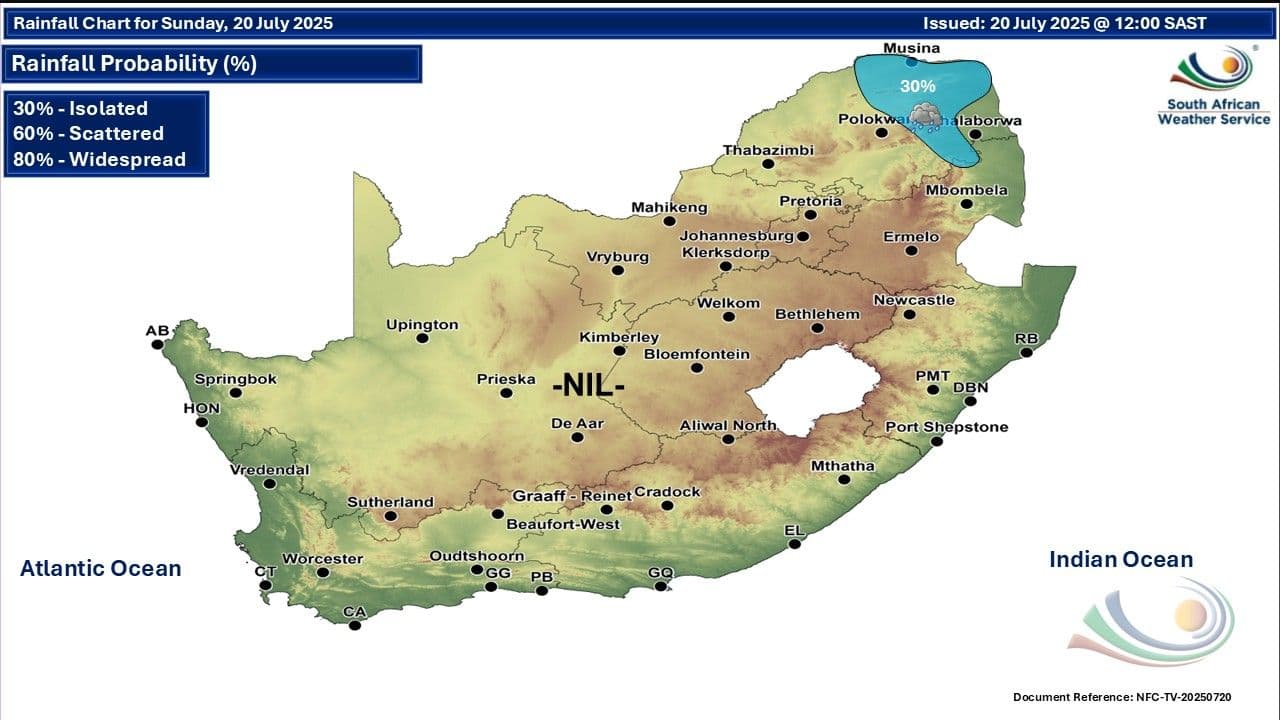
A Land of Contrasts: A Snapshot of South Africa's Winter
South Africa's winter weather is anything but uniform, a true testament to its vast and varied landscape. Forget the idea of a single, predictable cold season; instead, imagine a tapestry woven with vastly different threads, often on the very same day. For instance, while parts of the might wake to a frosty morning, transitioning to a fine, windy, and even warm afternoon in the north, 's north coast could be experiencing morning rain. Meanwhile, the Highveld provinces like and typically settle into partly cloudy, cool to cold conditions, often shrouded in morning fog that demands caution. Even the sun's intensity shifts dramatically, with a low UVB index in the contrasting sharply with a high index in KZN. This immediate, province-by-province variation isn't just a quirk; it's a fundamental characteristic of South African winter, shaping daily life and posing unique challenges across its diverse regions, even before the major weather systems make their presence felt.
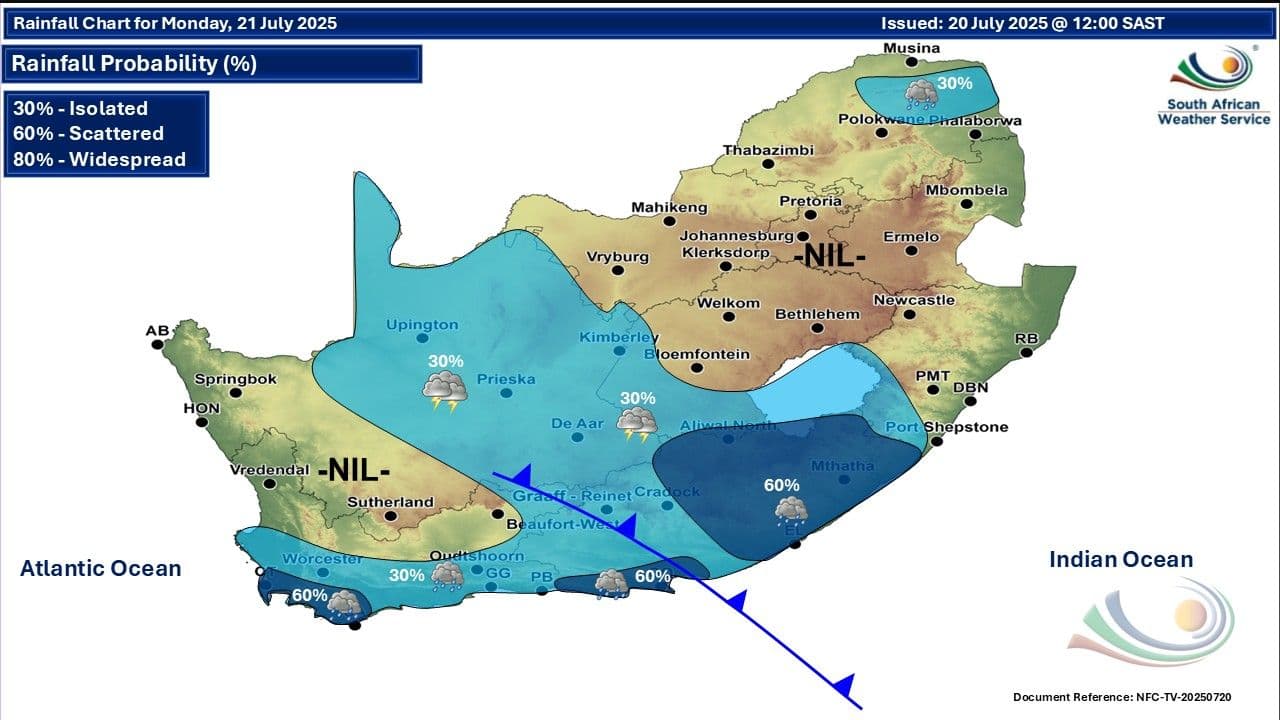
Winds of Change: Navigating Cold Fronts and Fire Risks
Moving beyond the daily kaleidoscope of conditions, South Africa's winter narrative is often dominated by the relentless march of cold fronts. These powerful systems are the primary drivers of significant weather shifts, bringing not just a drop in temperature but also a host of associated phenomena. From Monday, we anticipate a cold front sweeping through the central and southern parts of the country, promising isolated to scattered showers and rain, and even the possibility of more snowfall in higher altitudes like . However, these fronts often herald more than just precipitation. The same systems that bring a chill can also whip up damaging winds, particularly in areas like the central , posing a real threat to high-sided vehicles and extending travel times. Crucially, these dry, strong winds, combined with often parched winter landscapes, elevate the risk of extreme veld fire conditions. Areas like , , and become tinderboxes, where a single spark can ignite a devastating blaze, underscoring the critical link between atmospheric dynamics and ground-level hazards.
From Coast to Karoo: Your Regional Weather Playbook
Understanding the broad strokes of cold fronts and general diversity helps, but truly navigating South Africa's winter requires a regional playbook. Along the 's coast, mornings can be frosty before giving way to fine, cool days, with evening cloudiness and a shift to moderate south-westerly winds signalling approaching weather. Inland, especially towards the central and eastern parts, it can feel surprisingly warm before the evening chill sets in. The vast , with its frosty mornings and windy, cool to cold conditions, offers a stark contrast to its warmer northern reaches. The Highveld, encompassing , , and , often experiences cool to cold, partly cloudy days, with persistent morning fog patches that can severely reduce visibility. Over in the and , wind is a constant companion, adding to the chill, particularly near the border. The , too, feels the wind, often accompanied by interior fog, while on the east coast sees morning rain along its northern stretches and western fog, maintaining a cool but sometimes humid feel. Each region, truly, demands its own unique approach to winter living.
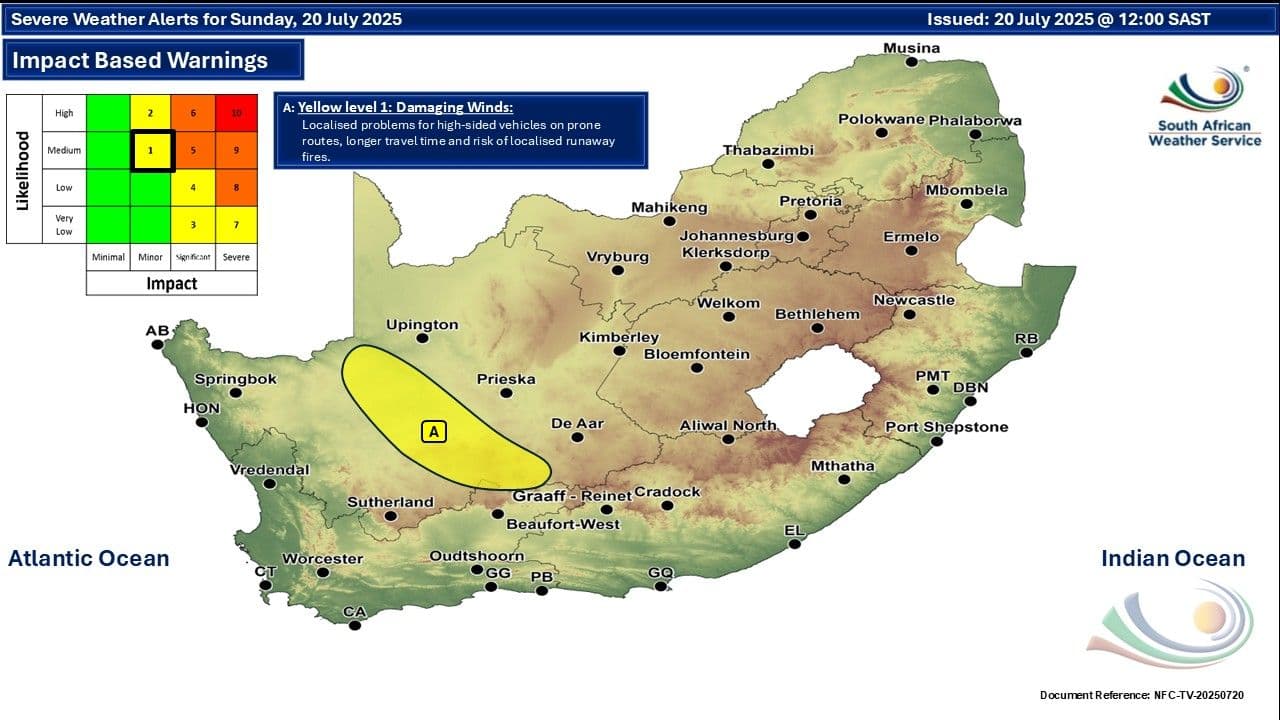
Beyond the Forecast: Essential Safety and Smart Preparation
Knowing the forecast is merely the first step; the real value lies in translating that information into practical safety and preparedness strategies. With warnings for damaging winds, especially over the central , travellers need to be acutely aware of potential hazards for high-sided vehicles, planning for longer journeys or considering alternative routes. The dire threat of extreme veld fires, particularly in areas like and , demands extreme caution: avoid open flames, dispose of cigarettes responsibly, and report any signs of fire immediately. For those in frost-prone areas like the and , protecting sensitive plants and outdoor pipes is crucial. Morning fog in , , and the necessitates slower driving speeds and increased following distances. And remember, even in winter, the sun's UV rays can be potent, as indicated by the high UVB index in , so sun protection remains vital. Regularly checking updated forecasts and understanding the specific risks for your location isn't just good practice; it's essential for staying safe and comfortable through South Africa's diverse winter.
Related Articles
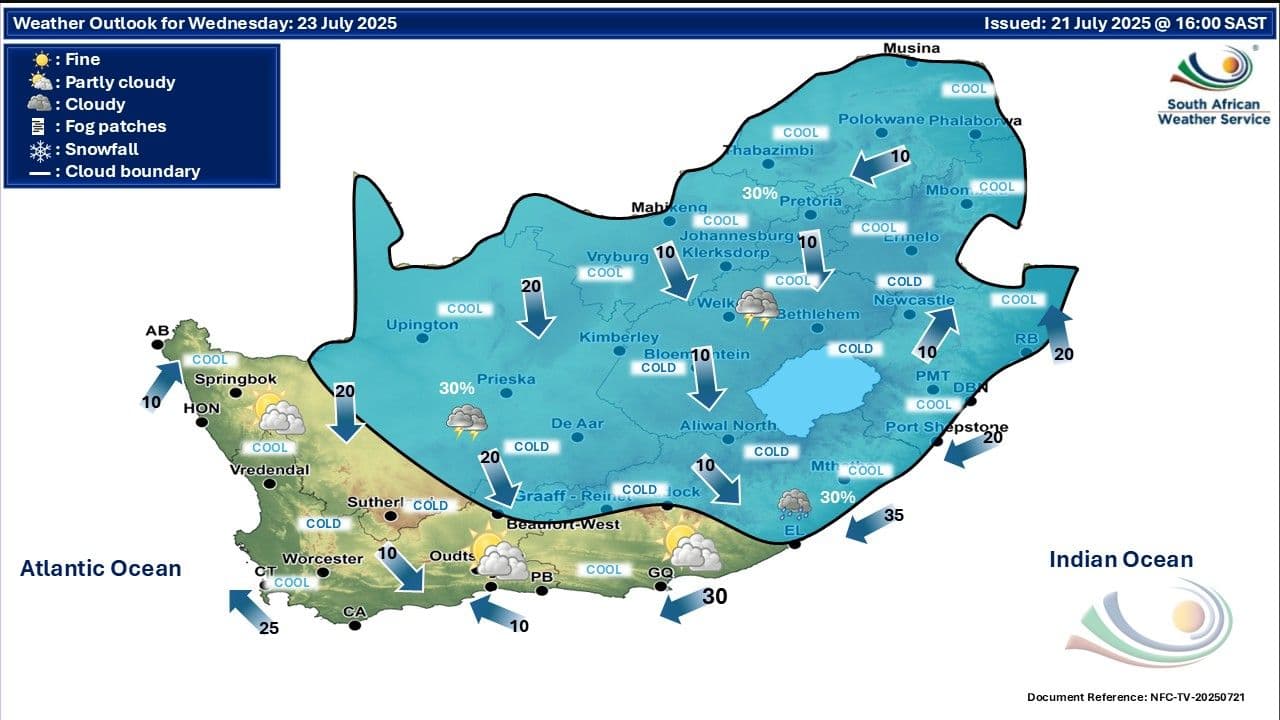
Winter's Shifting Canvas: Unpacking South Africa's Diverse Cold Front Experience

Winter's Shifting Canvas: Unpacking South Africa's Diverse Cold Front Experience
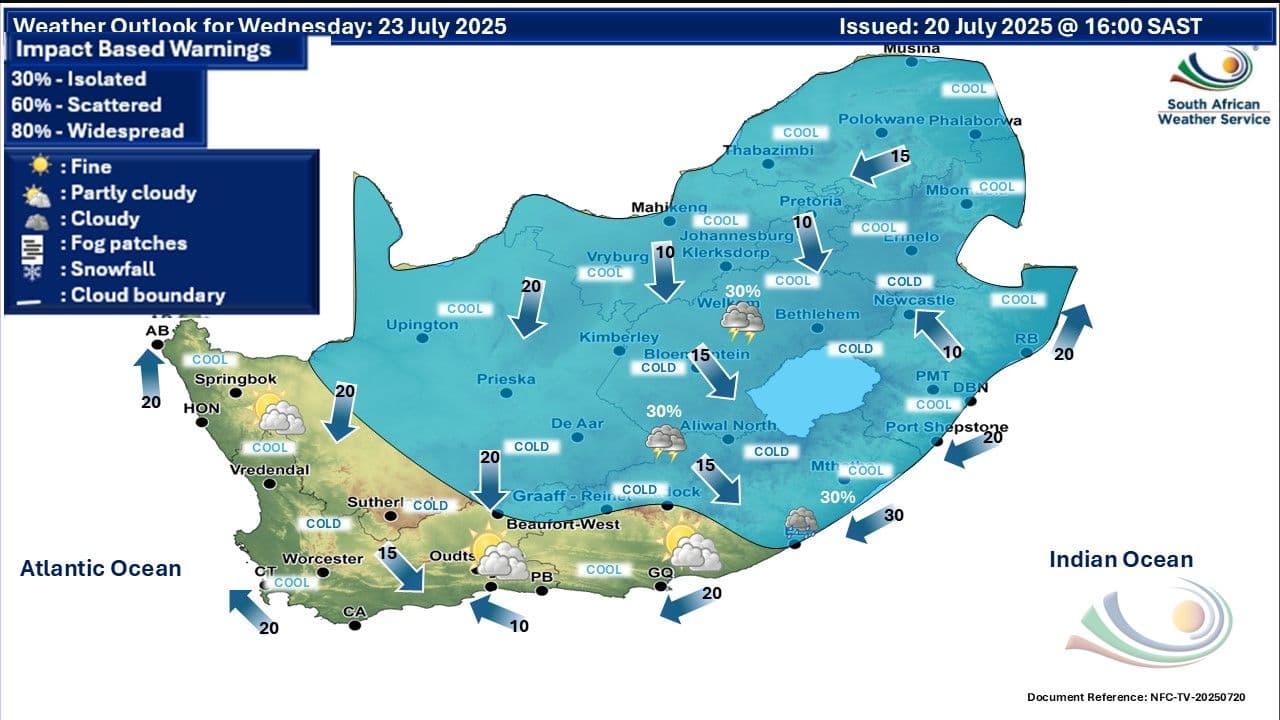
When Southern Skies Turn White: Decoding South Africa's Intense Cold Front

When Southern Skies Turn White: Decoding South Africa's Intense Cold Front
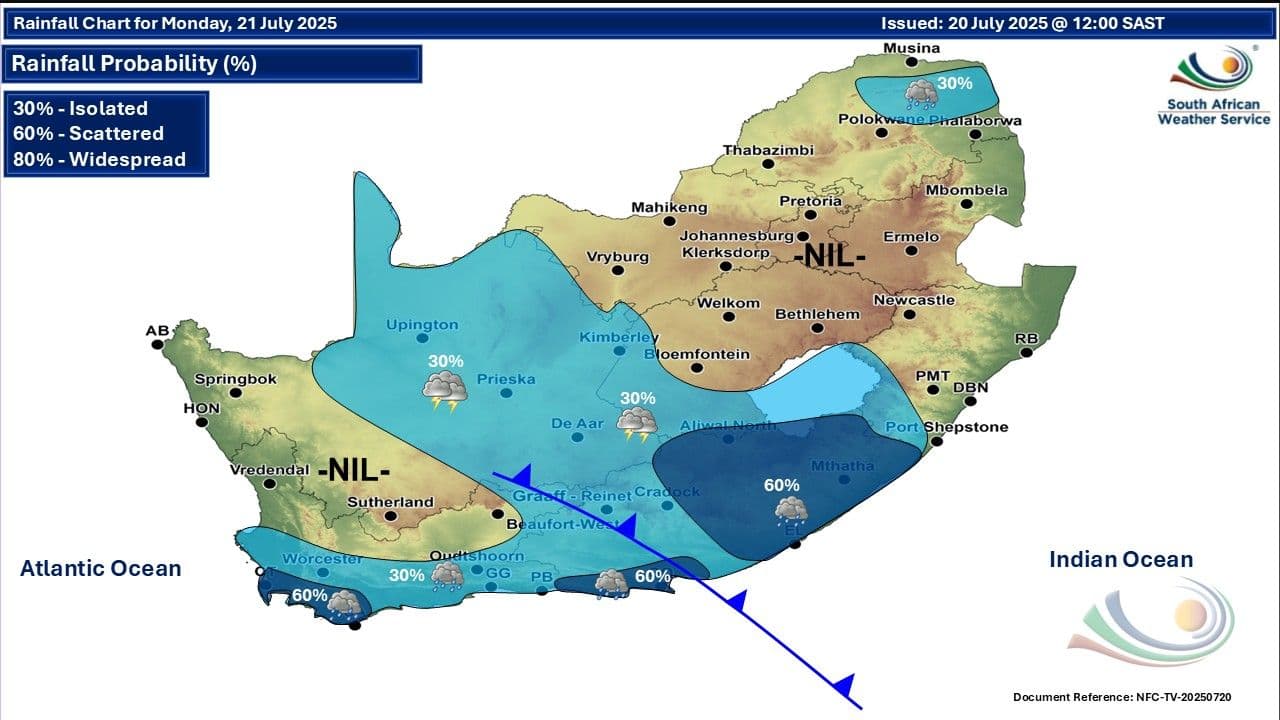
Unveiling Winter's True Face: South Africa's Next Cold Front and Its Ripple Effect

Unveiling Winter's True Face: South Africa's Next Cold Front and Its Ripple Effect

Coastal Deluge to Inland Chill: Navigating South Africa's Weekend Weather Gauntlet
